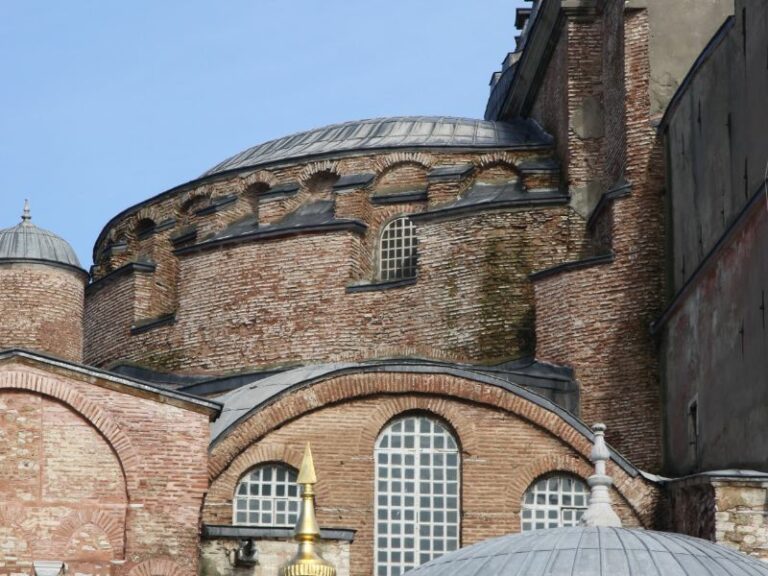Introduction
Situated in the verdant hills of Ephesus, Turkey, Meryemana Evi, or the House of the Virgin Mary, is a site of profound historical and religious significance. Revered by both Christians and Muslims, this sanctuary is believed to be the last residence of Mary, the mother of Jesus.
The site’s serene surroundings and profound spiritual ambiance draw thousands of pilgrims and tourists each year. Exploring the mysteries of Meryemana Evi offers a unique glimpse into ancient traditions, religious devotion, and the enduring legends that have made it a place of pilgrimage and reflection for centuries.
The Setting: Mount Nightingale and Ephesus
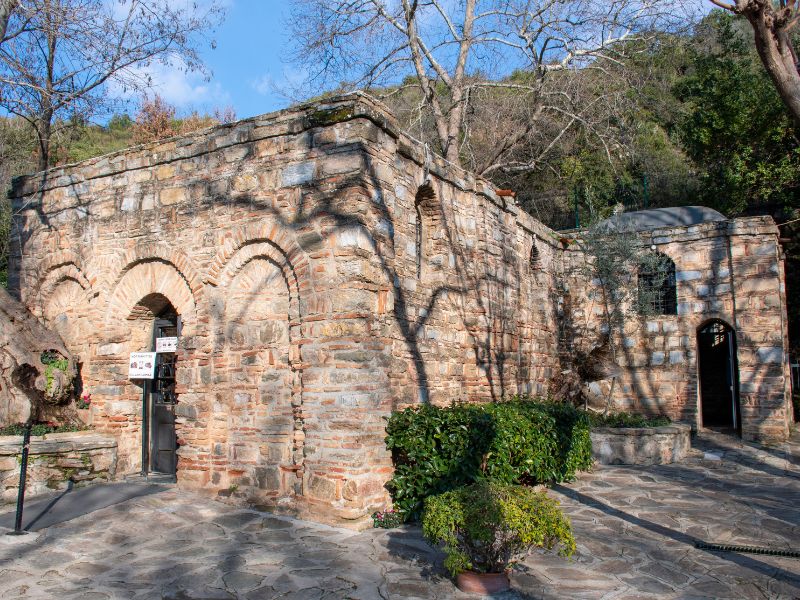
Meryemana Evi is perched on the picturesque slopes of Mount Nightingale, near the ancient city of Ephesus. Ephesus itself is a treasure trove of historical and cultural heritage, having been a vital center of early Christianity and an important city in the Roman Empire.
Known as one of the Seven Churches of Asia mentioned in the Book of Revelation, Ephesus holds a unique place in both Christian and Islamic contexts. The tranquil atmosphere of Meryemana Evi is further enhanced by its natural surroundings, including a serene fountain and a wishing wall where visitors leave heartfelt notes and prayers.
Legends and History of the House of the Virgin Mary
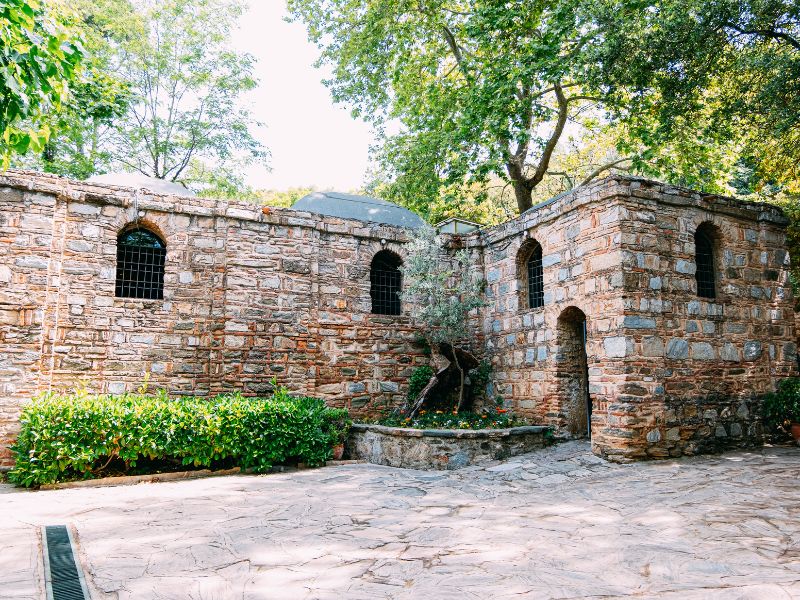
The Legend of St. John and the Virgin Mary
According to Christian tradition, St. John the Apostle brought the Virgin Mary to Ephesus after the crucifixion of Jesus Christ. This narrative finds its roots in the Bible, where Jesus, from the cross, entrusted Mary to John’s care: “Near the cross of Jesus stood his mother, his mother’s sister, Mary the wife of Clopas, and Mary Magdalene.
When Jesus saw his mother there, and the disciple whom he loved standing nearby, he said to her, ‘Woman, here is your son,’ and to the disciple, ‘Here is your mother.’ From that time on, this disciple took her into his home.” Subsequently, John is believed to have moved to Ephesus, bringing Mary with him.
However, the evidence supporting Mary’s residence in Ephesus is scant. Early mentions include the synodal letter from the Council of Ephesus in 431, which references “the city of the Ephesians, where John the Theologian and the Virgin Mother of God St. Mary [lived and are buried].”
Additionally, 13th-century Jacobite bishop Bar-Hebraeus wrote of John bringing Mary to Patmos before founding the Church of Ephesus. In the 18th century, Pope Benedict XIV suggested Mary followed John to Ephesus, although he never enacted changes to official texts placing her death in Jerusalem.
Despite these hints, stronger evidence points to Mary living and dying in Jerusalem. Juvenal, Bishop of Jerusalem, testified to her tomb’s existence in 451, and a basilica was erected above it around the 4th and 5th centuries, now known as the Church of the Dormition.
Blessed Anne Catherine Emmerich’s Visions
The modern recognition of Meryemana Evi in Ephesus is largely due to the visions of Blessed Anne Catherine Emmerich, a 19th-century German nun. Emmerich described the house and its surroundings with remarkable detail, as recorded by poet Clemens Brentano.
These accounts inspired French priests and nuns to locate and preserve the site, leading to the discovery of the House of the Virgin Mary. However, Brentano’s records have been questioned for their authenticity.
When investigating Emmerich’s beatification, experts found inconsistencies between Brentano’s original notes and the published versions, suggesting that he may have augmented the narratives with external sources. Despite this, Emmerich was beatified in 2004 based on her sanctity and virtue, not Brentano’s books.
Architectural and Cultural Significance
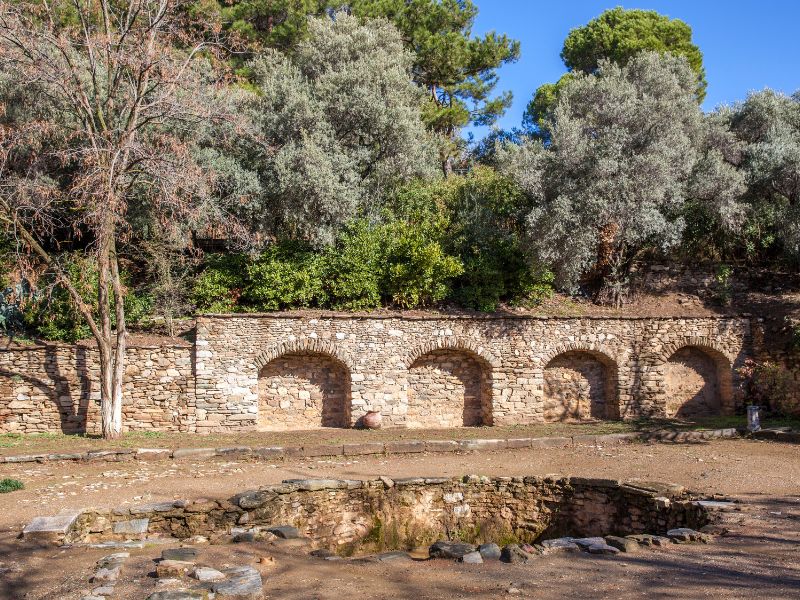
Architectural Style
The House of the Virgin Mary is a modest stone structure that reflects the simplicity and humility associated with Mary’s life. Characterized by its small size, stone construction, and arched doorway, the architecture embodies the historical period and the region’s traditional building techniques.
Visitors of the House of Virgin Mary are greeted by a huge golden statue of the Virgin Mary at the beginning of the road to Meryemana, near the Upper Gate to Ephesus. This recent addition, installed by Mayor Zeynel Bakıcı, aims to draw religious tourists’ attention to the House of St. Mary, comparing it to the Statue of Liberty and Christ the Redeemer.
The shiny statue is also an excellent vantage point for views of Ephesus and Selçuk. A winding road leads 4.5 kilometers uphill to the sanctuary, lined with informational boards in various languages and olive trees planted by Lazarist Fathers in 1898. Upon arrival, pilgrims and tourists are welcomed by statues of Anne Catherine Emmerich and St. Mary.
The statue of Mary at the end of the olive tree path, a gift from a religious community in Izmir dating back to 1867, was placed in its current location by Father François Saulais in 1960.
In the grove to the southeast, a rectangular atrium with a medieval water reservoir, discovered in 1964, hints at the site’s historical significance, possibly as an early Christian baptismal place.
Cultural Importance
Meryemana Evi, or the House of the Virgin Mary, stands as a significant pilgrimage destination, attracting both Christian and Muslim faithful. For Christians, it represents a tangible connection to the life of the Virgin Mary, while for Muslims, Mary (known as Maryam) is revered as the mother of one of Islam’s great prophets.
This site symbolizes interfaith harmony and mutual respect, highlighting its cross-cultural importance. Despite lacking scientifically acceptable evidence, the place has never been officially recognized by the Roman Catholic Church as the home of Mary.
However, several popes have acknowledged its significance through various gestures, bolstering its authenticity in the eyes of the faithful. For instance, Pope Leo XIII blessed the house during his pilgrimage in 1896, and subsequent popes have continued to visit and honor the site.
The House of the Virgin Mary also holds a unique place in Muslim devotion. Besides the sacred spring believed to have healing properties, the so-called Quran Room, adorned with Quranic verses and Islamic symbols, attracts many Muslim visitors.
This intermingling of Christian and Muslim traditions underscores the site’s role as a beacon of interfaith unity and cultural affection. Despite occasional radical opposition, the Turkish military guards the sanctuary around the clock to ensure its safety.
The international character of the site continues to grow, with around 300,000 visitors annually, each contributing to its rich tapestry of faith and cultural significance.
Archaeological and Preservation Efforts
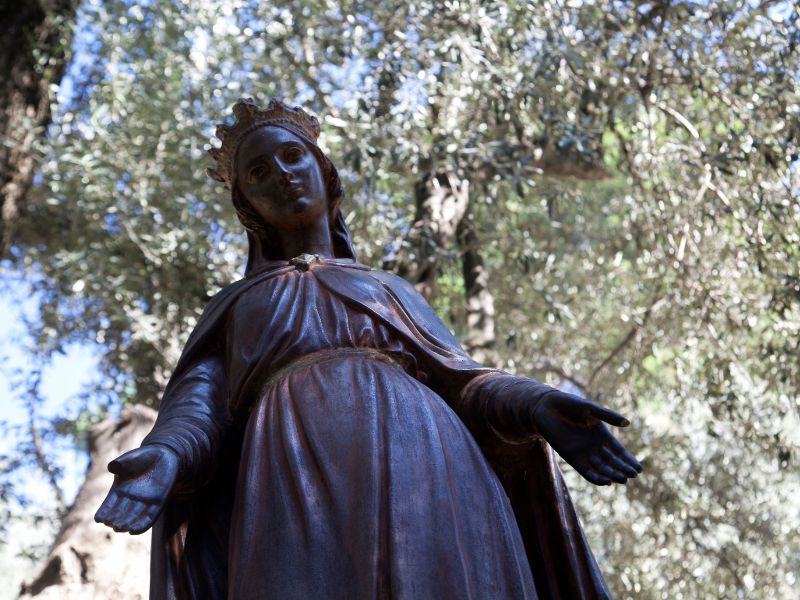
Ongoing archaeological and preservation efforts are crucial to maintaining the integrity of Meryemana Evi. Initial excavations began in 1898, led by architect M. Carré, who suggested the house dated to “the first centuries.”
Further investigations by archaeologist Abbé Wogh in 1905 dated the building’s historical components to the 5th to 7th centuries CE. Systematic excavations between 1965 and 1967 by Adriano Prandi identified the remains as a late Byzantine chapel from the 13th century, suggesting an older structure possibly from the 2nd or 3rd century CE.
More recent excavations by an Austrian team in 2003 revealed that the original structure could date back to the 1st century BCE, reopening discussions about the House of St. Mary’s authenticity. These initiatives ensure the site’s accessibility to future generations, preserving its historical and spiritual significance.
Conclusion
Meryemana Evi, the House of the Virgin Mary, stands as a testament to the enduring allure of historical and spiritual sites. Its rich history, architectural charm, and spiritual significance continue to captivate visitors from diverse backgrounds. Despite debates on its authenticity, Meryemana Evi remains a cherished destination for pilgrims and travelers alike.

